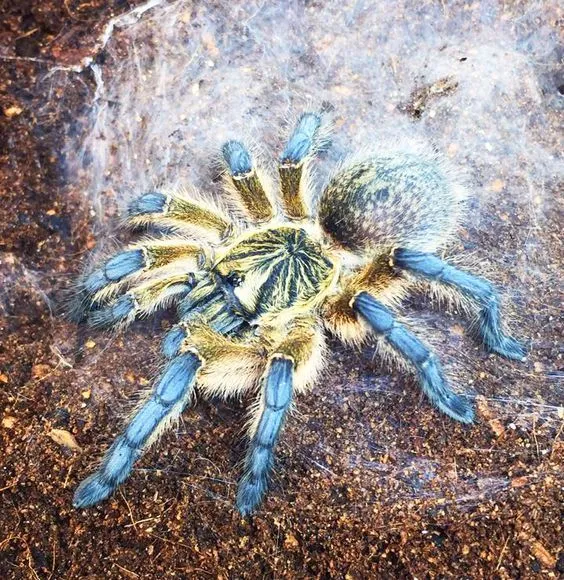What Makes Tarantula Spiders Seem Deadly?
Tarantula spiders, with their large size and often hairy appearance, can be quite intimidating. The perception of these creatures as ‘deadly’ often stems from a combination of factors, including their imposing physical characteristics, the common fear of spiders (arachnophobia), and the potential for a painful bite. However, it is crucial to understand that while tarantulas possess venom, their toxicity to humans is generally quite low. Many misconceptions and exaggerated tales contribute to the image of the deadly tarantula, making it important to approach the subject with factual information and scientific accuracy. This article aims to debunk myths and provide a clear understanding of the true nature of tarantula spiders and the actual risks they pose.
Appearance and Size Impact
The sheer size of many tarantula species immediately captures attention and can trigger an instinctive fear response. Some tarantulas can have a leg span of up to 10 inches or more, making them one of the largest spiders in the world. Their robust bodies, covered in hairs, and the presence of prominent fangs further contribute to their intimidating appearance. This visual aspect often leads people to overestimate the danger. The perception of size and the associated threat are amplified by cultural representations in movies and literature, which frequently portray tarantulas as menacing predators. This visual impact alone can make individuals perceive a higher level of danger than actually exists.
Venom Potency

Tarantulas, like all spiders, use venom to subdue their prey. However, the venom of most tarantula species is not particularly potent to humans. It’s more akin to a bee sting than a life-threatening dose. The venom is primarily designed to immobilize insects and small invertebrates, not to harm larger animals. The composition of the venom varies between different species, but generally, it contains enzymes and proteins that cause localized pain, swelling, and muscle cramps. While a bite can be painful and cause discomfort, serious systemic reactions such as severe allergic reactions are extremely rare. Understanding the actual potency of the venom helps to dispel the myth that tarantulas are inherently deadly to humans.
Bite Effects on Humans
When a tarantula bites a human, the effects are typically localized. The most common symptoms include immediate pain at the bite site, redness, swelling, and itching. Some individuals may experience muscle cramps or mild systemic symptoms like nausea and headache. The severity of the reaction can vary depending on the individual’s sensitivity and the specific species of tarantula. In most cases, the symptoms subside within a few hours or days, and medical treatment is usually not required. Antihistamines or pain relievers might be used to alleviate discomfort. While a tarantula bite is certainly unpleasant, it is rarely life-threatening, and the risk of serious complications is exceptionally low.
Are Tarantulas Aggressive?
Tarantulas are generally not aggressive spiders; they are more likely to flee or display defensive behaviors than to attack. Aggression is typically observed only when they feel threatened or when defending their territory or eggs. Most tarantula species are quite docile and prefer to avoid confrontation. Bites usually occur only when a spider feels trapped, provoked, or when they are mishandled. Understanding their non-aggressive nature is crucial to debunking the misconception that tarantulas actively seek out to harm humans. Responsible handling, avoiding direct contact, and providing a safe environment are key to preventing bites and minimizing interactions.
Defensive Behaviors

Instead of aggression, tarantulas employ several defensive behaviors to protect themselves from potential threats. One common defense mechanism is the use of urticating hairs. When threatened, they can flick these tiny, irritating hairs from their abdomen towards the perceived danger. These hairs cause skin irritation and itching, deterring potential predators. Another defense is their tendency to run away and hide. Tarantulas are incredibly fast and agile, allowing them to quickly retreat to a safe location. Raising their front legs and displaying their fangs is also a common threat posture, serving as a warning to back off. These behaviors highlight that tarantulas are primarily defensive, not actively seeking to attack.
Hairs as a Defense
Many tarantula species have developed urticating hairs as a primary defense mechanism. These hairs are found on their abdomen and are designed to irritate the skin and eyes of potential predators. When threatened, the tarantula can flick these hairs in the direction of the threat. The hairs embed themselves in the skin, causing intense itching and discomfort. This defense is often sufficient to deter predators, including small mammals and humans. The irritation from the hairs can last for several days, serving as an effective deterrent without the need for venom. This defense mechanism shows that tarantulas have a sophisticated approach to self-preservation, favoring a less aggressive, more passive defense method.
Geographical Distribution and Species Variability
Tarantulas are found in various habitats around the world, from the Americas to Asia, Africa, and Australia. Different species have adapted to various climates and ecological niches. The size, appearance, and behavior of tarantulas vary significantly depending on the species and their geographical location. Some species are more docile, while others might be more prone to defensive behaviors. The venom potency also differs. For instance, some species from certain regions might have slightly more potent venom than others, but even then, it is rarely a significant threat to humans. This variability highlights the importance of understanding the specific characteristics of the tarantula species encountered and not generalizing about their behavior or danger level.
The Most Venomous Tarantula Species

While most tarantula venom is not highly toxic to humans, certain species might have slightly more potent venom. However, there is no tarantula species whose venom is considered lethal to humans. The venom’s composition, which can vary among species, might cause more severe localized symptoms in some cases. These symptoms may include prolonged pain, swelling, and muscle cramps. The overall risk remains low compared to venom from other animals, such as snakes or scorpions. When assessing the potential danger, it is important to focus on individual reactions and not overestimate the overall risk. Studies on tarantula venom are ongoing, and scientists are constantly learning more about their effects on humans and other animals.
Top 5 Facts about Deadly Tarantula Spiders
Fact 1 The Myth of Lethality
The widespread belief that tarantulas are deadly is largely a myth. Their venom is generally not life-threatening to humans. While a bite can cause pain and localized symptoms, severe reactions or fatalities are exceptionally rare. The perception of danger is often inflated due to their large size and intimidating appearance. It is essential to differentiate between the potential for a painful bite and the actual risk of serious harm.
Fact 2 Venom Strength

The venom of most tarantulas is not highly potent to humans. It is primarily designed to subdue prey, such as insects and small invertebrates. The venom’s composition varies between species, but it typically contains enzymes and proteins that cause localized pain, swelling, and muscle cramps. The strength of the venom is generally lower than that of other venomous creatures, such as snakes or scorpions.
Fact 3 Bite Severity
The effects of a tarantula bite are typically localized. Common symptoms include immediate pain at the bite site, redness, swelling, and itching. In most cases, these symptoms subside within a few hours or days. Medical treatment is usually not required, and severe systemic reactions are rare. The bite’s severity depends on individual sensitivity and the specific species. Most individuals recover without any long-term complications.
Fact 4 Behavior in the Wild
Tarantulas are generally not aggressive and prefer to avoid confrontation. They are more likely to flee or display defensive behaviors rather than attack. Bites usually occur when the spider feels threatened or when provoked. Responsible handling and providing a safe environment are key to preventing bites. Understanding their behavior in the wild helps dispel misconceptions about their nature.
Fact 5 What to Do if Bitten

If bitten by a tarantula, it’s essential to remain calm. Clean the bite site with soap and water. Apply a cold compress to reduce swelling and pain. Seek medical attention if symptoms worsen or if you experience any unusual reactions, such as difficulty breathing or severe allergic symptoms, although these are extremely rare. Most bites can be managed at home with basic first aid, highlighting the relatively low risk to human health.
Conclusion Can a Tarantula Spider Kill You?
In conclusion, while tarantula spiders may appear intimidating and their bites can be painful, the likelihood of a tarantula spider killing a human is extremely low. The venom of most tarantula species is not highly toxic to humans, and the bite effects are typically localized. Understanding their behavior, defensive mechanisms, and the true nature of their venom is crucial for dispelling myths and fostering a more accurate perception of these fascinating creatures. While caution and respect are always advised when interacting with any wildlife, the fear of tarantulas being deadly should be replaced with informed understanding.
